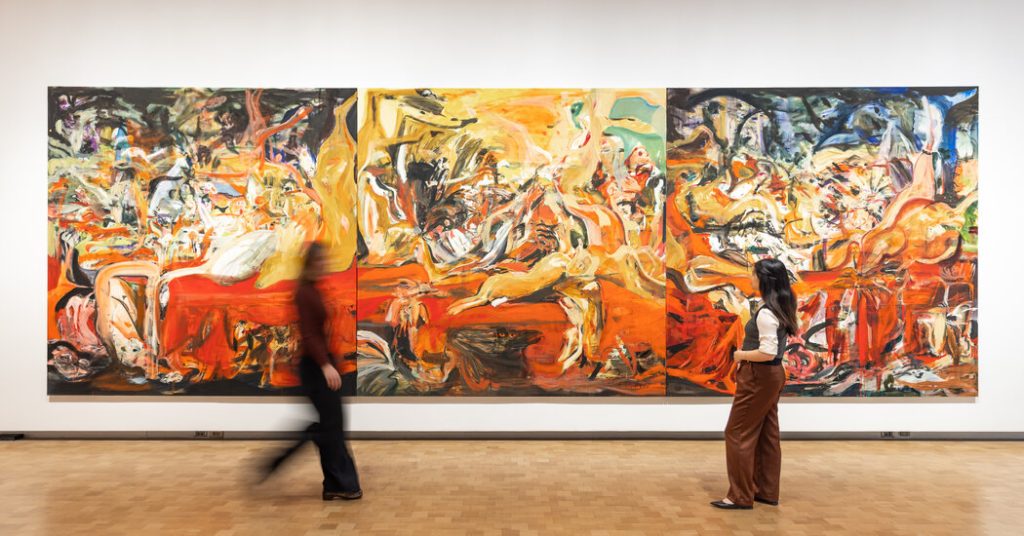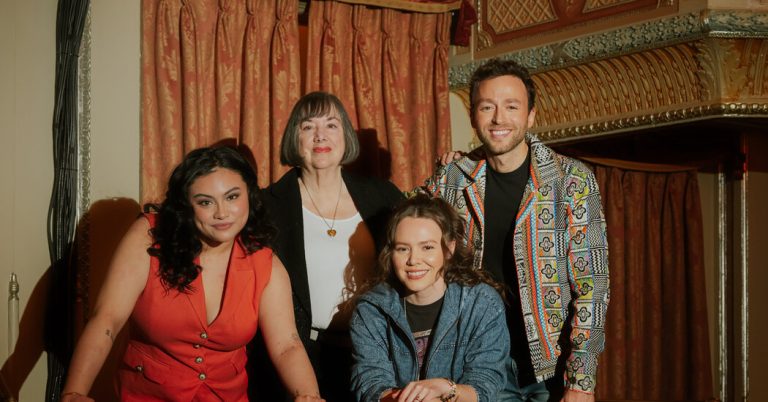Is there such a thing as being too tall to be an artist? Christina Ramberg, the subject of a long-overdue retrospective at the Philadelphia Museum of Art, stood 6-foot-1 and considered her height a liability. She grew up in the Eisenhower era, when the average American woman was 5-foot-4 and aspired to have an hourglass figure, and she sewed her own clothes, since standard sizes didn’t fit. As if wanting to somehow shrink herself, she painted images of the female body constrained by fabric — corseted, cinched, girdled and even bound.
By a nice coincidence, Cecily Brown, a generation younger than Ramberg and the subject of a retrospective at the nearby Barnes Foundation, is also a devotee of the human figure — but unbound. If Ramberg’s imagery evokes a period when women were tethered to traditional roles and constricting fashions, Brown’s world is just the opposite: untethered and uninhibited.
Brown is known for exuberant semi-abstractions, in which gleaming nudes in shifting gradations of salmon pink turn up in French forests and other far-flung places. The two artists could not be more different, but their work teems with eros, emotion and painterly audacity, and it has turned Philadelphia’s Benjamin Franklin Parkway, the site of both museums, into a temporary capital of the much-heralded female gaze.
Ramberg, who died in 1995 and remains underknown, was officially a Chicago Imagist, one of a dozen or so figurative artists who defined their work in opposition to New York, the country’s No. 1 painting town. Spurning abstraction, the Chicago Imagists worked on the margins of cartooning and surrealism. They pursued the rough, often raunchy edges of American culture with a zealousness that made the art of both coasts seem relatively polite.
Ramberg’s work is easy to recognize, even from the next room. She painted cropped, centered, fastidiously crafted images that isolated a female hand or a vintage hairdo against a blank ground, as if turning them into heraldic emblems. And she can fairly be called a connoisseur of undergarments. With nearly devotional detail, she captured the texture of different fabrics, contrasting the smooth, blue-black sheen of satin bands with the intricate patterns embedded in lace. Her colors, compared to the screaming hues of other Imagists, tend to be soft and muted, with an emphasis on peachy beiges and grayed lavenders reminiscent of women’s slips.










